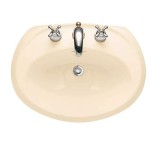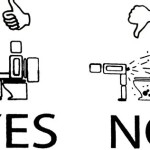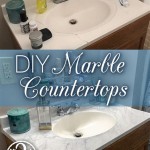How to Install a Large Bathroom Mirror
Installing a large bathroom mirror can significantly enhance the aesthetic appeal and functionality of a bathroom. A large mirror can create the illusion of a larger space, provide ample reflection for grooming, and serve as a focal point in the room's design. However, due to their size and weight, installing these mirrors requires careful planning, proper tools, and a systematic approach to ensure a safe and secure installation. This article provides a comprehensive guide on how to install a large bathroom mirror effectively.
Preparing for the Installation
The preparation phase is crucial for a successful installation. This stage involves gathering the necessary tools and materials, assessing the wall's condition, and taking accurate measurements. Rushing this phase can lead to errors and complications during the installation process.
Gathering Tools and Materials: A well-equipped workspace is essential. The following tools and materials are typically required:
- Safety Glasses and Gloves: Protects eyes and hands during the installation.
- Measuring Tape: Accurate measurements are critical for placement.
- Pencil: Used for marking locations on the wall.
- Level: Ensures the mirror is installed straight. A spirit level or laser level can be used.
- Drill with Appropriate Drill Bits: Select drill bits suitable for the wall material (e.g., tile, drywall, concrete).
- Wall Anchors/Screws: Choose anchors and screws rated to support the mirror's weight. Consider using heavy-duty anchors for large mirrors.
- Mirror Adhesive: Specifically designed for adhering mirrors to walls. Ensure it is compatible with the mirror's backing and the wall surface.
- Construction Adhesive (Optional): Provides additional support, especially for heavier mirrors.
- Caulk Gun: For applying adhesive and sealant.
- Caulk/Sealant: Prevents moisture from seeping behind the mirror.
- Mirror Clips (Optional): Offer additional support and security. Choose clips that complement the mirror's design.
- Stud Finder: Locates studs behind the wall for secure anchoring.
- Clean Rags: For cleaning the mirror and wall surface.
- Painter's Tape: To temporarily hold the mirror in place while the adhesive dries and to protect the surrounding wall.
- Shims: Used to level the mirror if necessary.
Assessing the Wall: Before beginning the installation, the wall's condition must be carefully assessed. This includes checking for any existing damage, such as cracks or holes, and ensuring the wall is structurally sound enough to support the weight of the mirror. The wall surface must be clean, dry, and free of any loose paint or wallpaper. If the wall is painted, lightly sanding the area where the adhesive will be applied can improve adhesion. Identifying the wall material (drywall, plaster, concrete, tile) is critical for selecting the appropriate anchors and drill bits.
Taking Measurements: Accurate measurements are paramount for proper mirror placement. Determine the desired height and position of the mirror on the wall. Use a measuring tape and pencil to mark the location of the mirror's edges. Double-check the measurements to ensure accuracy. It is advisable to use a level to draw a horizontal line representing the top edge of the mirror. This line will serve as a guide during the installation process. In cases where the mirror has mounting brackets, measure and mark the location of the mounting holes on the wall.
Mirror Installation Techniques
The actual installation involves several methods, depending on the mirror's design and the wall's construction. Common methods include adhesive-only, clip-only, and a combination of adhesive and clips.
Adhesive-Only Installation: This method is suitable for lighter mirrors on smooth, stable walls.
- Wall Preparation: Clean the wall thoroughly to remove dust, grime, and any loose debris. Lightly sand the area where the adhesive will be applied.
- Applying Adhesive: Apply mirror adhesive to the back of the mirror in vertical beads, spaced a few inches apart. Avoid applying adhesive to the edges of the mirror. Using construction adhesive in conjunction with mirror adhesive provides a stronger bond.
- Positioning the Mirror: Carefully lift the mirror and align it with the previously marked lines on the wall. Press the mirror firmly against the wall, ensuring it is level.
- Securing the Mirror: Use painter's tape to hold the mirror in place while the adhesive dries. The drying time can vary depending on the adhesive used, so refer to the manufacturer's instructions. Shims can be used to level the mirror if needed.
- Removing Tape and Cleaning: Once the adhesive is fully cured, remove the painter's tape. Clean the mirror surface with a glass cleaner.
Clip-Only Installation: This method relies solely on mirror clips to hold the mirror in place. It is typically used for mirrors that are too heavy for adhesive alone or when the wall surface is not suitable for adhesive.
- Marking Clip Locations: Determine the placement of the mirror clips. Typically, clips are placed at the top, bottom, and sides of the mirror. Use a level and measuring tape to mark the locations for the clip mounting holes.
- Drilling Pilot Holes: Drill pilot holes at the marked locations using a drill bit appropriate for the wall material. Ensure the holes are deep enough to accommodate the wall anchors.
- Installing Wall Anchors: Insert wall anchors into the pilot holes. Tap them gently with a hammer if necessary to ensure they are flush with the wall surface.
- Attaching Clips: Attach the mirror clips to the wall anchors using screws. Ensure the clips are securely fastened to the wall.
- Positioning the Mirror: Carefully lift the mirror and slide it into the clips. Ensure the mirror is properly seated in the clips and that it is level.
- Securing the Mirror: Some mirror clips have a locking mechanism that secures the mirror in place. Engage this mechanism to prevent the mirror from accidentally falling out.
Adhesive and Clip Combination: This method provides the most secure installation, combining the bonding strength of adhesive with the mechanical support of clips.
- Combining Techniques: Follow the steps for both adhesive-only and clip-only installation methods. Apply adhesive to the back of the mirror and install the mirror clips as described above. The clips provide immediate support while the adhesive cures, and the adhesive provides long-term bonding strength.
Addressing Specific Challenges
During the installation process, several challenges may arise, such as dealing with uneven walls, drilling through tile, and handling very heavy mirrors. Addressing these challenges requires specific techniques and precautions.
Uneven Walls: If the wall is uneven, the mirror may not sit flush against the surface, creating gaps and potential instability. To address this, use shims behind the mirror to level it. Place shims at strategic points along the mirror's edges to compensate for the unevenness. Ensure the shims are hidden from view. Consider using a thicker layer of adhesive to fill the gaps between the mirror and the wall.
Drilling Through Tile: Drilling through tile requires specialized drill bits and techniques to prevent cracking or chipping the tile. Use a diamond-tipped drill bit designed for drilling through ceramic or porcelain tile. Start drilling at a slow speed and apply gentle pressure. Use water to lubricate the drill bit and prevent overheating. Once the drill bit has penetrated the tile, switch to a regular drill bit suitable for the wall material behind the tile.
Handling Heavy Mirrors: Very large or heavy mirrors require extra caution and potentially additional support. Enlist the help of at least one other person to lift and position the mirror. Consider using a mirror support bar during installation to temporarily hold the mirror in place. Ensure the wall anchors and screws are rated to support the mirror's weight. For extremely heavy mirrors, consult with a professional installer.
Sealing and Finishing: Once the mirror is installed and secured, apply a bead of caulk or sealant around the edges of the mirror to prevent moisture from seeping behind it. Choose a caulk or sealant that matches the color of the wall or mirror frame. Apply the caulk smoothly and evenly using a caulk gun. Smooth the caulk bead with a wet finger or a caulking tool to create a clean, professional finish. Allow the caulk to dry completely before using the bathroom.
By following these steps and taking the necessary precautions, a large bathroom mirror can be installed safely and effectively, enhancing the bathroom's aesthetics and functionality. Careful planning, proper tools, and attention to detail are key to a successful installation.

How To Install A Mirror Without Frame Merrypad

How To Frame A Mirror

How To Frame Out That Builder Basic Bathroom Mirror For 20 Or Less

Easy Diy Tutorial Adding Trim Around A Giant Mirror For Ers

How To Frame Out That Builder Basic Bathroom Mirror For 20 Or Less

Mirror Frame Diy How To Update A Basic Bathroom Our Faux Farmhouse

Diy How To Frame A Builder Grade Bathroom Mirror Home And Hallow

Diy Bathroom Mirror Frame For Under 10 O Hayley Blog

How To Pick And Hang The Perfect Bathroom Mirror Roomhints

Diy Bathroom Mirror Frame For Under 10 O Hayley Blog
Related Posts







